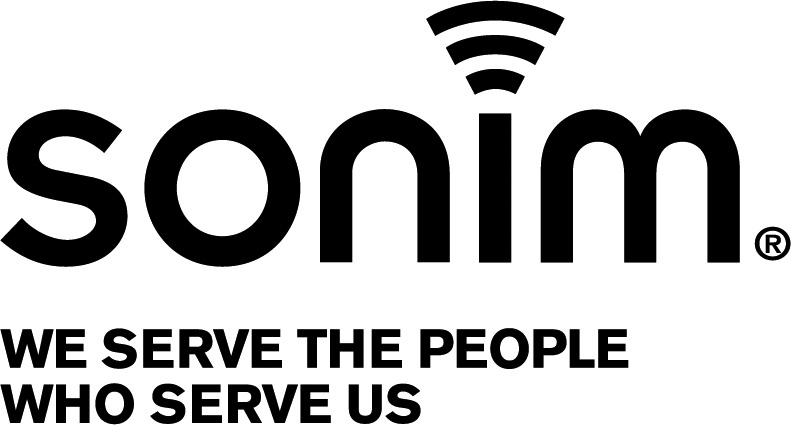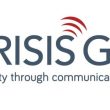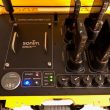Sonim Technologies’ IPO a tribute to public-safety vision for open-standards ecosystem, CEO says
Ultra-rugged LTE device maker Sonim Technologies today began trading on the Nasdaq Global Market, a step that reflects the burgeoning open-standards environment that is developing with the establishment of public-safety and critical-infrastructure broadband initiatives, according to Sonim CEO Bob Plaschke.
“This is another milestone in a path that was driven by a lot of brave people who took the initiative to create an open environment for public safety,” Plaschke said during an interview with IWCE’s Urgent Communications. “We’ve been supportive of public safety along the way, and this is just another indication that the world is changing for public safety.”
When Congress approved legislation creating FirstNet—the nationwide public-safety broadband network (NPSBN) system in the U.S.—in 2012, many industry sources at the time expressed concern whether vendors would be willing to build LTE devices that operated on the 700 MHz Band 14 spectrum licensed to the FirstNet Authority. After all, the total public-safety market was just a small fraction of the size of the commercial market, it was unclear when a FirstNet LTE network would be built, and public safety wanted devices that were more hardened than typical commercial handsets.
Despite these circumstances, Sonim introduced the first commercially available rugged Band 14 LTE smartphone in 2014. This initial device has evolved into a broader product portfolio during the past five years, driven largely by learnings from more than 100 public-safety LTE trials in which Sonim participated prior to the FirstNet Authority selecting AT&T as its nationwide contractor.
Plaschke credited the vision of the four public-safety officials and other leaders who advocated for the system that would become FirstNet and an open-standards public-safety broadband ecosystem worldwide, which has become a reality despite many challenges.
“This is a victory for them, because they were the ones who were told that this would never happen,” Plaschke said. “Those four guys—Jeff Johnson, Chris Moore, Chuck Dowd and Dick Mirgon—were told that no one would ever launch a commercial handset [that would operate on a public-safety-broadband system]. This is just another vindication for their belief, their leadership and what they did.
“We were there from the beginning with these guys and battled—arm in arm, shoulder to shoulder—with them. This is just an indication that public safety now has a lot more choice, which is great.”
In the year ending on Dec. 31, 2018, Sonim Technologies sold about 311,000 devices and generated $1.277 million in profit on $135.7 million of revenue—a more than 130% increase in revenue in comparison to 2017, when Sonim lost $8.519 million, according to the company’s Form S-1 filing with the SEC.
This growth was fueled largely by Sonim’s release of the XP8 smartphone and XP5s feature phone, which were key components of the initial launch of FirstNet, according to the SEC filing.
“The establishment of a nationwide public-safety broadband network, or FirstNet, in 2017 and other public-safety-focused mobile network has created a significant opportunity for us to be the leading mobile-solution provider for public-sector task workers,” Sonim states in its S-1 filing.
Sonim solutions also have gained traction outside of the traditional public-safety space, most notably as the push-to-talk device for Southern Linc, which provide the LTE communications for the Southern Company utility in the southeast U.S.
In addition to its rugged LTE handsets that are designed to meet public-safety requirements, Sonim Technologies also is developing solutions to tackle some of the most challenging issues facing the first-responder communications market today—notably, helping them communicate when a terrestrial LTE system is not available.
Although the LTE standard includes Proximity Services (ProSe) functionality to support direct-mode communications between devices when a network is not available, the low power and internal antennas of most LTE devices means the effective range promises to be much less than a high-power LMR portable with an external antenna.
With this in mind, Sonim Technologies has discussed two different alternatives to address the direct-mode issue: the Sonim Direct Mode 900 MHz module that uses LoRa technology and is available today, and the Sonim LMR Enabled Detachable (SLED), an accessory that is designed to transform a Sonim LTE device into one that also can communicate as an LMR portable, when needed.
In addition, Sonim Technologies also worked with LTE router manufacturer Cradlepoint and satellite provider Inmarsat to develop Rapid Deployment Kits (RDK) that are designed to let first responders carry a deployable LTE network with them in areas where there is no traditional LTE network coverage.
While many of Sonim Technologies’ innovations have been designed to meet public-safety needs, the company’s S-1 filing notes that these same feature sets also are valued in other critical-communications sectors, including utilities, transportation, construction, manufacturing and public-sector enterprises.
“Equipping workers with smarter mobile phones also enables more efficient communication with—and between—field employees and enhances the information that decision-makers use to deploy resources within their organizations,” according to Sonim Technologies’ S-1 filing. “The PTT-over-cellular-network market has been steadily growing and is poised to overtake the LMR market.”
Where Sonim Technologies perceives the push-to-talk-over cellular (PoC) market as a significant opportunity, the company has received little serious competition from traditional LMR vendors, according to the Sonim filing with the FCC.
“We believe that, in the LTE market, traditional LMR providers have not historically entered, primarily to avoid harming their significant LMR business,” the Sonim filing states. “For example, certain major LMR providers have historically achieved over $3.0 billion in annual revenues from device sales. Further, these LMR providers typically do not have stocked products with major U.S. and Canadian wireless carriers and achieving stocked product status with the wireless carriers is associated with substantial costa and technical know-how regarding carrier certification requirements.
“In 2018, there were no traditional LMR devices stocked at any of the four largest U.S. and the three largest Canadian wireless carriers. Stocking products at the wireless carriers may also result in competition against existing dealers for LMR providers, with certain such providers transacting with over 700 dealers in North America.”
With the money from the IPO, Sonim Technologies will be better positioned to continue to develop products that are designed to deliver reliable communications to first responders and other critical-infrastructure personnel that often have to work in harsh environments, Plaschke said.
“It provides us with the capital continue to pursue the agenda of serving the brave heroes that go out in the field every day,” Plaschke said. “And that’s not only those who fight fires and keep our cities safe, but those who make our cities work—the folks who pick up garbage, the folks who fix our streets, the folks who clean the buildings, the people who drive buses. All of those folks are part of larger set of unsung heroes that we work to serve on a day-to-day basis. This just helps us do that in a more comprehensive way.”

















